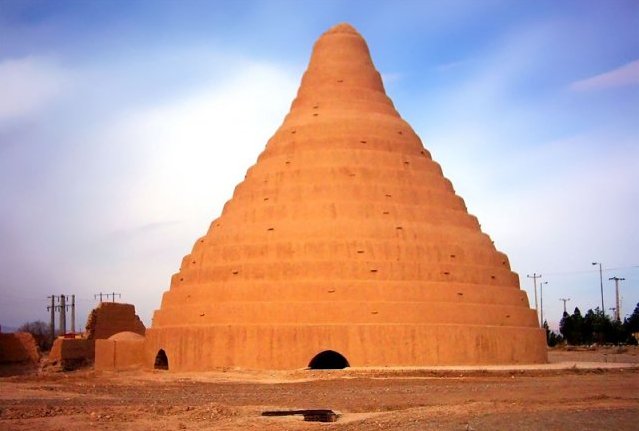Remarkable Ancient Windcatchers: Air Conditioning Systems Built Since Antiquity
A. Sutherland - AncientPages.com - Windcatchers are very old wind towers can be still found across the Middle East. The structures were created by ancient engineers to create natural ventilation in buildings.
Windcatchers have various designs, such as the uni-directional, bi-directional, and multi-directional. The original windcatchers in Iran, however, are normally multi-directional with two to eight openings at the top to catch the breeze from any direction.
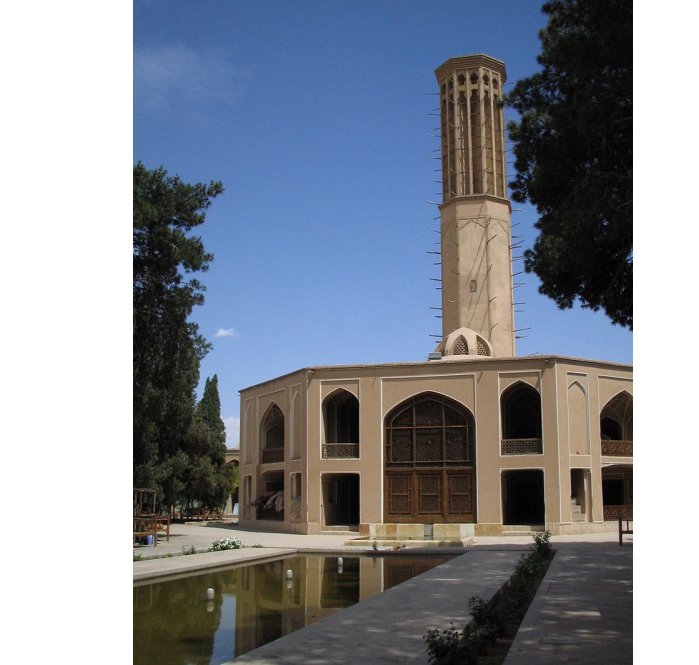
The windcatcher of Dowlatabad in Yazd, Iran—one of the tallest existing windcatchers. Image credit: Fabienkhan
As we have previously wrote in one of our articles, ancient Persian engineers mastered the technique of storing ice in the middle of summer in the desert. In order to accomplish this, they constructed ancient structures, called yakhchals that should not be confused with pyramids or ziggurats.
The yakhchals are in fact ancient “refrigerators” used to store ice and other food items.
The ancient engineers of the Middle East were highly skilled and also built windcatchers that we can still admire today. The ancient windcatchers appear throughout the Middle East.
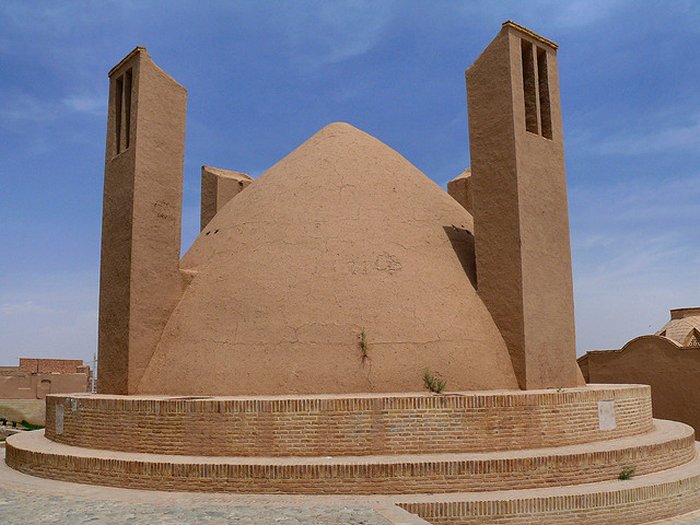
Image Credit Flickr User Dynamosquito
We find them in Iran, Afghanistan and Pakistan and they have all traditional Persian-influenced architecture. The windcatchers are also known in traditional Egyptian architecture in Ancient Egypt as demonstrated in Windcatchers on the Pharonic house of Neb- Ammun, Egypt, 19th Dynasty, c.1300 BC, British Museum.
It was revived in Neoislamic architecture as the works of Hassan Fathy. In Egypt the windcatchers are known as "Malqaf".
See also:
10 Remarkable Advanced Ancient Technologies Ahead Of Their Times
Proof Of Superior Ancient Technology – Found In All Four Corners Of The World
Yakhchals: Ingenious Ancient ‘Refrigerators’ Could Store Ice In The Hot Desert
More Advanced Ancient Technology
The reason for constructing these ancient wind towers is related to the climate in the region. Towns centered on desert oases tend to be packed very closely together with high walls and ceilings, maximizing shade at ground level. The heat of direct sunlight is minimized with small windows that face away from the sun.
Serving as ventilation systems they have given the people of the Middle East air conditioning for thousands of years.
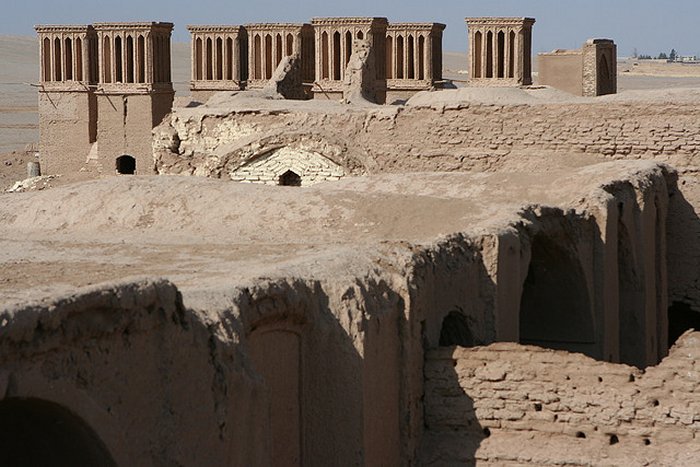
Image Credit Flickr User Ninara
They function in one of three ways. Some direct the airflow downwards and use direct wind entry. Others direct airflow up either using a temperature gradient assisted either by the sun or the wind.
Despite their very old origin, windcatchers may even provide a solution for some very modern architectural problems.
The ancient windcatcher approach has been utilized in Western architecture, such as in the visitor center at Zion National Park, Utah, where it functions without the addition of mechanical devices in order to regulate temperature.
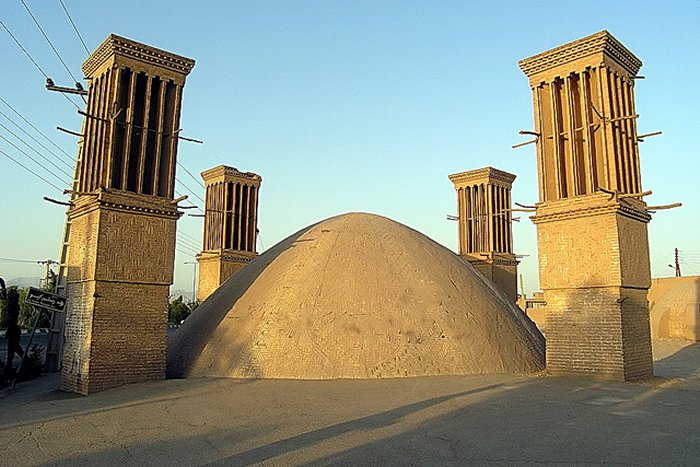
Image Credit Flickr User Pilar Torres
The construction design of windcatchers vary much but they all perform a similar key function: channeling prevailing winds trapped in vents above the roofs of buildings down to cool and ventilate the rooms located below.
They have been built since antiquity but their ingenious design can still contribute with ideas, necessary in our modern society.
Written by – A. Sutherland - AncientPages.com Senior Staff Writer
Copyright © AncientPages.com All rights reserved. This material may not be published, broadcast, rewritten or redistributed in whole or part without the express written permission of AncientPages.com
More From Ancient Pages
-
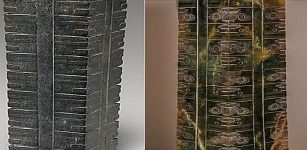 Mysterious Jade Cong – Perplexing Ancient Chinese Artifact
Featured Stories | Jan 3, 2023
Mysterious Jade Cong – Perplexing Ancient Chinese Artifact
Featured Stories | Jan 3, 2023 -
 4,500-Year-Old Ramp Might Explain How Huge Stones Were Transported To Great Pyramids’ Building Site
Archaeology | Nov 9, 2018
4,500-Year-Old Ramp Might Explain How Huge Stones Were Transported To Great Pyramids’ Building Site
Archaeology | Nov 9, 2018 -
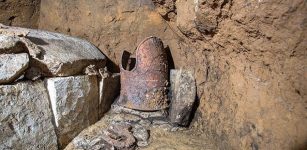 1,500-Year-Old Tunnel Tomb With Human Remains And Artifacts Accidentally Unearthed In Japan
Archaeology | Feb 23, 2018
1,500-Year-Old Tunnel Tomb With Human Remains And Artifacts Accidentally Unearthed In Japan
Archaeology | Feb 23, 2018 -
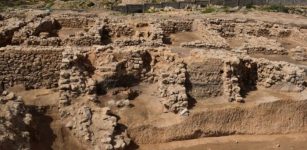 Ancient Greco-Roman Amphora Workshop Discovered In Alexandria, Egypt
Archaeology | Apr 17, 2022
Ancient Greco-Roman Amphora Workshop Discovered In Alexandria, Egypt
Archaeology | Apr 17, 2022 -
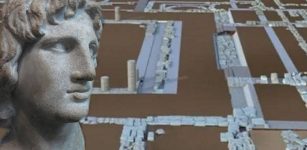 Visit The Palace Where Alexander The Great Was Born In Pella
Archaeology | Oct 21, 2020
Visit The Palace Where Alexander The Great Was Born In Pella
Archaeology | Oct 21, 2020 -
 Secret Kumari Kandam Continent And Links To Lemurians
Civilizations | May 18, 2020
Secret Kumari Kandam Continent And Links To Lemurians
Civilizations | May 18, 2020 -
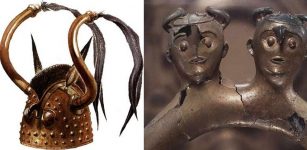 Mysterious Bronze Age Viksö Helmets With Horns Related To Myths, Holy Animals And Divine Power
Artifacts | Feb 27, 2018
Mysterious Bronze Age Viksö Helmets With Horns Related To Myths, Holy Animals And Divine Power
Artifacts | Feb 27, 2018 -
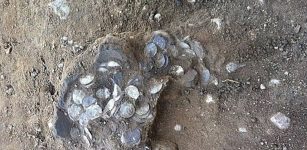 Viking Age silver coins unearthed in Jutland
Artifacts | Aug 27, 2015
Viking Age silver coins unearthed in Jutland
Artifacts | Aug 27, 2015 -
 Roman Forum (‘Forum Romanum’) – The Heart Of Ancient Rome
Featured Stories | Aug 5, 2019
Roman Forum (‘Forum Romanum’) – The Heart Of Ancient Rome
Featured Stories | Aug 5, 2019 -
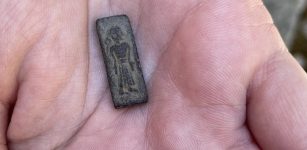 Rare And Tiny Ancient Stamps Found In Falster May Show The Way To An Unknown King’s Home
Archaeology | Jul 26, 2023
Rare And Tiny Ancient Stamps Found In Falster May Show The Way To An Unknown King’s Home
Archaeology | Jul 26, 2023 -
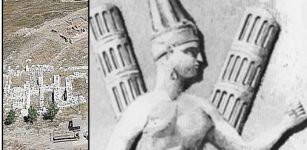 Cuneiform Tablet Unearthed In Hittite City Samuha Refers To Love And War Goddess Sausga
Archaeology | Oct 2, 2023
Cuneiform Tablet Unearthed In Hittite City Samuha Refers To Love And War Goddess Sausga
Archaeology | Oct 2, 2023 -
 Aditi – Primeval Hindu Goddess Who Is Source Of All Living Beings
Featured Stories | Apr 3, 2021
Aditi – Primeval Hindu Goddess Who Is Source Of All Living Beings
Featured Stories | Apr 3, 2021 -
 Ancient Humans: Clarifying The Co-Existence Between Modern Humans And Neanderthals
Archaeology | Oct 13, 2022
Ancient Humans: Clarifying The Co-Existence Between Modern Humans And Neanderthals
Archaeology | Oct 13, 2022 -
 Surprising Time Capsule In Antarctica – Evidence Of Toxic Heavy Metal Pollution 800 Years Ago
Earth Changes | Jan 18, 2024
Surprising Time Capsule In Antarctica – Evidence Of Toxic Heavy Metal Pollution 800 Years Ago
Earth Changes | Jan 18, 2024 -
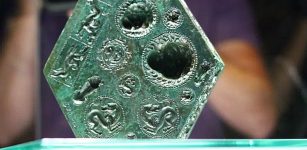 Unique 2,000-Year-Old Hexagonal-Shaped Bronze Matrix Of Sarmizegetusa Regia, Romania
Artifacts | Jan 7, 2016
Unique 2,000-Year-Old Hexagonal-Shaped Bronze Matrix Of Sarmizegetusa Regia, Romania
Artifacts | Jan 7, 2016 -
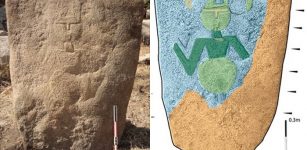 Unique Balchiria Stelae Engraved With A Goat-Like Figure Found On Corsica Is A Puzzle
Featured Stories | Feb 3, 2020
Unique Balchiria Stelae Engraved With A Goat-Like Figure Found On Corsica Is A Puzzle
Featured Stories | Feb 3, 2020 -
 Akrotiri Of Thera: Sophisticated City In The Greek Cyclades Devastated By Volcanic Eruption
Civilizations | Jul 6, 2016
Akrotiri Of Thera: Sophisticated City In The Greek Cyclades Devastated By Volcanic Eruption
Civilizations | Jul 6, 2016 -
 Top 10 Discoveries About Our Ancient Ancestors In 2023
Archaeology | Dec 29, 2023
Top 10 Discoveries About Our Ancient Ancestors In 2023
Archaeology | Dec 29, 2023 -
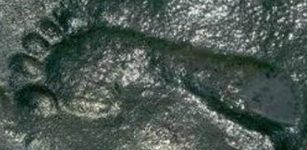 Mystery Of The 290-Million-Year-Old Zapata Footprint In New Mexico
Featured Stories | Sep 23, 2020
Mystery Of The 290-Million-Year-Old Zapata Footprint In New Mexico
Featured Stories | Sep 23, 2020 -
 Ale Conner: Unpleasant And Dangerous Profession In Medieval England
Ancient History Facts | Oct 19, 2017
Ale Conner: Unpleasant And Dangerous Profession In Medieval England
Ancient History Facts | Oct 19, 2017

